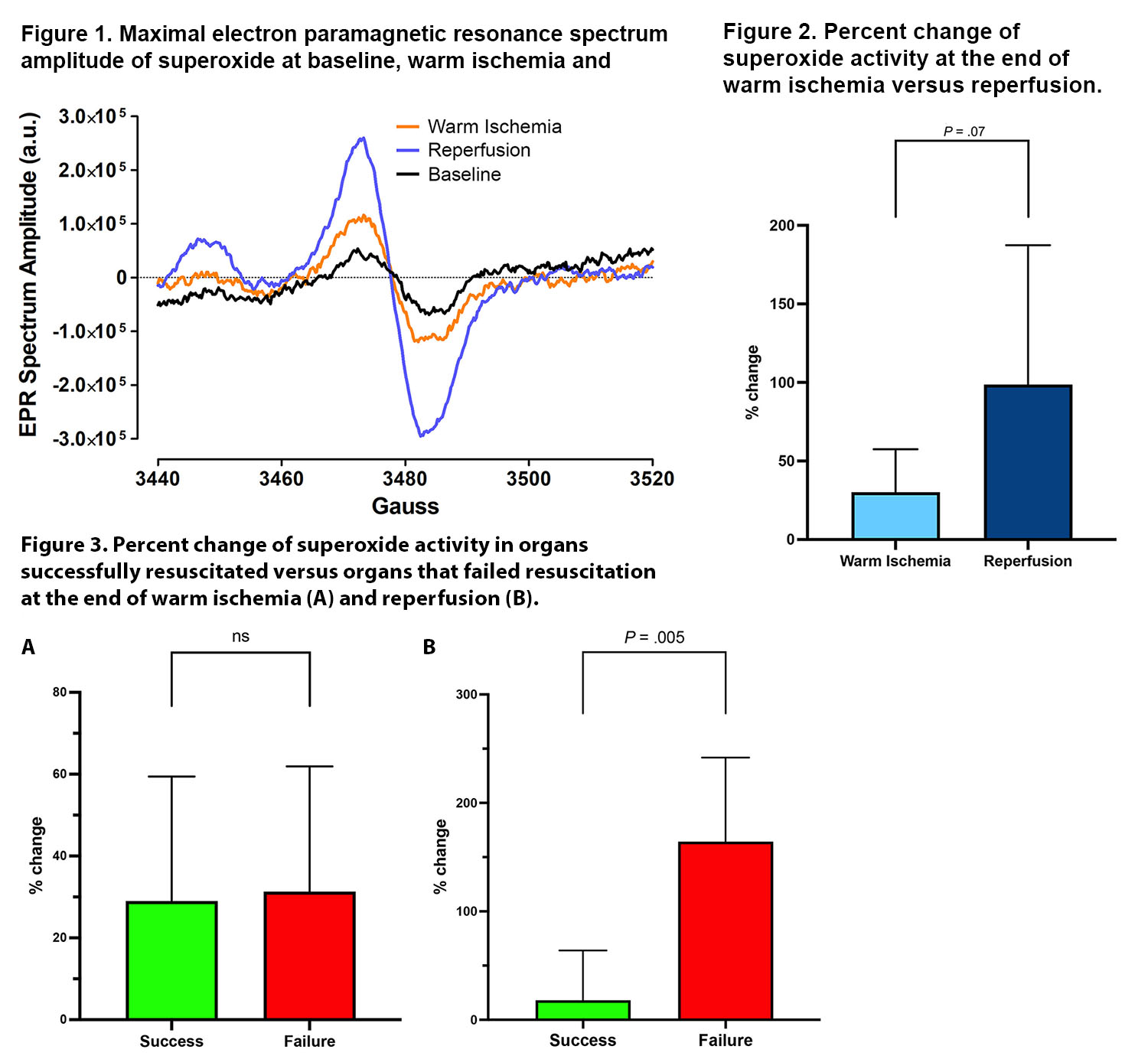Superoxide in Cardiac Allografts from Donors After Circulatory Death
1Department of Surgery. Division of Cardiothoracic Surgery, University of Nebraska Medical Center, Omaha, NE, 2College of Medicine. Department of Cellular and Integtrative Physiology., University of Nebraska Medical Center, Omaha, NE, 3Department of Anesthesiology, University of Nebraska Medical Center, Omaha, NE, 4Department of Cellular and Integrative Physiology, University of Nebraska Medical Center, Omaha, NE
Meeting: 2022 American Transplant Congress
Abstract number: 647
Keywords: Donors, non-heart-beating, Heart/lung transplantation, Ischemia, Procurement
Topic: Basic Science » Basic Science » 14 - Ischemia Reperfusion
Session Information
Session Time: 5:30pm-7:00pm
 Presentation Time: 5:30pm-7:00pm
Presentation Time: 5:30pm-7:00pm
Location: Hynes Halls C & D
*Purpose: Quality of cardiac allografts from donors after circulatory death (DCD) is adversely impacted by warm ischemia and subsequent reperfusion during organ resuscitation. Post-transplant myocardial contractility impairment is associated with elevated levels of reactive oxygen species (ROS) and oxidative stress-induced cardiomyocyte apoptosis. The aim of this study was to measure levels of superoxide during various stages of DCD donation.
*Methods: We used a porcine DCD model. Allografts were resuscitated in-situ with thoracoabdominal normothermic regional perfusion (TA-NRP). Superoxide levels were measured using electron paramagnetic resonance (EPR) spectroscopy and a superoxide-sensitive cyclic hydroxylamine spin probe. Myocardial biopsy tissue samples collected at baseline, at the end of warm ischemia period (15 minutes post withdrawal), and during reperfusion. Percent changes in the maximal EPR spectrum amplitude were analyzed with Mann-Whitney test.
*Results: Six animals underwent hypoxic cardiac arrest, in-situ resuscitation, and EPR analysis. Figure 1 depicts maximal EPR amplitude at baseline, warm ischemia and reperfusion. Although not statistically significant, there was a trend toward greater percent change of superoxide during reperfusion in comparison to warm ischemia (Figure 2). Three subjects were successfully separated from TA-NRP with satisfactory graft function. We were unable to wean three animals from external mechanical support due to suboptimal graft function. Cardiac allografts that failed resuscitation demonstrated comparable percent change of superoxide at the end of warm ischemia (Figure 3A) and greater percentage change of superoxide from baseline to reperfusion in comparison to successfully resuscitated organs (Figure 3B).
*Conclusions: During the reperfusion phase of in-situ DCD heart resuscitation superoxide levels are increased. Organs that fail to regain satisfactory contractile function display a greater elevation of superoxide levels in comparison to successfully resuscitated organs. Interventions aimed to scavenge superoxide or inhibit its production during donor organ reperfusion may potentially be used to enhance the graft functional performance.
To cite this abstract in AMA style:
Urban M, Bruett T, Duncan KF, Markin NW, Chacon MM, Zimmerman MC. Superoxide in Cardiac Allografts from Donors After Circulatory Death [abstract]. Am J Transplant. 2022; 22 (suppl 3). https://atcmeetingabstracts.com/abstract/superoxide-in-cardiac-allografts-from-donors-after-circulatory-death/. Accessed December 13, 2025.« Back to 2022 American Transplant Congress

